Results 3,011 to 3,020 of 12094
Thread: Anandtech News
-
06-06-13, 08:30 PM #3011
Anandtech: Up Close with the 13.3-inch 2560 x 1440 Panel on Next-Gen Ultrabooks
Although entry level PC notebooks will still ship with a 1366 x 768 panel, the high end of the market is quickly shifting to 1080p and higher resolution panels. Some of the most interesting notebooks at Computex launched with high DPI panels, such as the new Acer Aspire S7 and the ASUS Zenbook Infinity - both with 13.3" 2560 x 1440 displays. These displays offer comparable pixel density to Apple's MacBook Pro with Retina Display.
Intel had one of the 2560 x 1440 Aspire S7s at their Computex suite as well as a microscope for showing off the difference in pixel size. With a 33% increase in pixel density, the 2560 x 1440 panel obviously has smaller pixels.
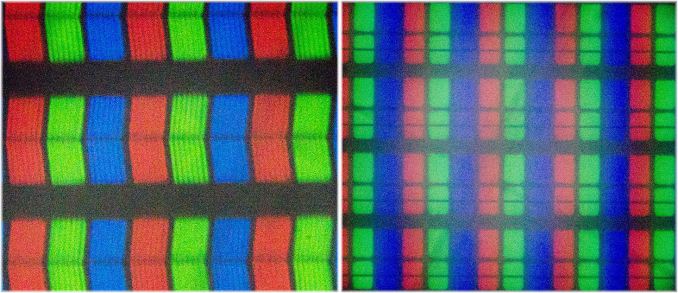
There's nothing new about increasing pixel density, however OS support/integration is just as important to the overall experience as physically outfitting notebooks with high DPI panels. Windows has traditionally done a terrible job of DPI scaling on the desktop, but word around Computex is that this should be fixed with Windows 8.1.
More...
-
06-06-13, 09:00 PM #3012
Anandtech: Computex 2013: Thunderbolt Graphics from SilverStone
Visiting the SilverStone booth was rather interesting. In a similar ilk to MSI’s GUS which used Thunderbolt to transmit data over PCIe, Silverstone are developing their own at-home device capable of dual-width GPUs up to 450W.
This is still in the development cycle – the main issue with MSI’s device (and I’d assume Silverstone as well) is how to deal with hot-plugging during the middle of intense GPU workloads. Aside from frame buffer management, at the point in time when the device is detatched there is no longer access to any data on the card – the PC or laptop then has to transfer what it knows to the frame buffer on the IGP and recalculate. Sounds easy-ish, but not a trivial task by any means.
Silverstone told me there is no release date as such as they are still in the alpha phase of development, but they are aiming for the $200-250 price point without a GPU.
Gallery: Computex 2013: Thunderbolt Graphics from SilverStone





More...
-
06-07-13, 03:02 AM #3013
Anandtech: QNAP Launches TS-x70 Pro Series with Core i3-3220
QNAP had a number of interesting announcements at Computex, and one that grabbed my attention right away was the new TS-x70 Pro series. Available in 4-bay, 6-bay and 8-bay models, this series marks the arrival of the new QTS 4.0 OS on x86. Instead of going for an Intel Atom-based platform, QNAP has decided to base this NAS series on a Ivy Bridge Core i3-3220. The i3-3220 doesn't have AES-NI and hence, no hardware acceleration for encrypted volumes. However, QNAP claims that the performance of the CPU is good enough to not have a very negative impact on encrypted volume performance (when compared to the Atom-based NAS units).
Other interesting features include integrated QSync (Dropbox-like feature), XBMC v12 (Frodo) in the HD Station and support for 4K media playback over HDMI (to a 1080p HDMI sink). On the business side, the NAS units also support optional 10 GbE card (there is a PCIe expansion slot).
We have already covered QTS 4.0 before. At Computex, QNAP showed it in action, with particular emphasis on the app-centric design and multi-window user interface. QNAP also introduced the REXP-1200U-RP and REXP-1600U-RP expanders which allow the TS-x79U series to scale up to 400 TB. The availability of VMware VAAI, vSphere client plug-in, Microsoft SCVMM/ODX and other features necessary for a virtualization-aware solution were touted. The VioStor NVR firmware is also getting a revamp with a new UI, cross-browser support and a 64-channel live monitoring display mode / 16-channel playback display mode.
Availability and pricing of the announced products wasn't available at the time of posting. We have reached out to QNAP and will update this piece after their response.
More...
-
06-07-13, 09:30 PM #3014
Anandtech: Computex 2013: ASRock Z87 with 22 SATA Ports [Update]
For X79 and Z77 ASRock have released an Extreme11 model, known for being high price due to the integrated PLX and LSI 2308 RAID chips to provide extra PCIe lanes and eight more SATA ports. For Z87, ASRock have gone one step further – the Extreme11 for Haswell will be four way SLI and Crossfire capable, but with an LSI chip designed to handle 16 SAS/SATA ports:
We get six SATA 6 Gbps from the chipset, and 16 from the LSI chip. If these were all SATA 6 Gbps, then we might expect a maximum peak speed in RAID-0 of 11 GBps, pushing the bandwidth of what I would assume is the PCIe 3.0 x8 required for the LSI chip harder than ever before. But the peak speeds showcased by ASRock were half this value at 5.5 gigabytes per second, suggesting that these LSI ports may be SATA 3 Gbps limited. Unfortunately I did not take a picture of what LSI chip was on board, although it does say SAS3 capable, which makes me wonder if it is not the 2308 or one that splits the SATA 6 Gbps into two SATA 3 Gbps.
I did ask about how many PLX chips were onboard – I was told one, which would suggest 32 lanes total when used in the normal configuration. This would mean that 4-way SLI and the LSI chip would not be possible, unless used in an abnormal configuration, such as the EVGA Z77 FTW which allocated only 8 lanes to the PLX to split into 32, and then we would have the other 8 for the LSI chip.
No word on price or release date yet (it is not on their website), but I could imagine it might be hitting the $600 of the Z77 Extreme11, although that had an additional PLX chip. The extra cost of the newer LSI chip might counterbalance this.
Update:
After speaking with ASRock and a few emails back and forth, we have some more information. I was particularly concerned about the PCIe lane allocation, and how to organize a single PLX 8747 chip for all the lanes involved. Most regular readers of our motherboard reviews will recognize that the PLX 8747 chip takes in up to 16 PCIe 3.0 lanes from the CPU and outputs 32 PCIe 3.0 lanes using a multiplexing technology and buffers (as we explained here).
ASRock uses a combination of switches and the PLX chip to achieve four-way SLI capablility and supply enough PCIe lanes to the LSI 3008 chip (confirmed):
In the diagram above, each line represents 8 lanes, and QS stands for Quick Switch which has a default path and an optional path (the optional path is used when a card in that slot is in use).
This means the following:
In single GPU use, we put the PCIe card in PCIe 5 for x16 lanes from the PLX which at this time has an x16 uplink to the CPU.
In dual GPU use, we put the cards in PCIe 5 for x16 lanes from the PLX and PCIe 7 for x8 lanes from the PLX. The PLX in this mode has an x16 uplink to the CPU.
- Alternatively we could put our cards into PCIe 5 and PCIe 3 for x8 lanes each from the PLX – the PLX in this mode has an x16 uplink.
- OR we could put our cards into PCIe 1 for 8 lanes from the CPU and PCIe 5 for 16 lanes from the PLX, with the PLX only having an x8 uplink.
In tri-GPU use, we can put the cards into PCIe 3, 5 and 7 for x8 lanes each from the PLX, meaning the PLX has an x16 uplink.
- OR we could put the cards into PCIe 1 for x8 from the CPU, PCIe 5 for 16 lanes from the PLX, and PCIe 7 for 8 lanes from the PLX. The PLX in this mode would have an x8 uplink.
- OR we could put the cards into PCIe 1, 3 and 5 for x8 (CPU), x8 (PLX), x8 (PLX), with the PLX having an x8 uplink.
In quad-GPU use, we only have one option:
- PCIe 1 has x8 from CPU
- PCIe 3 has x8 from PLX
- PCIe 5 has x8 from PLX
- PCIe 7 has x8 from PLX
- PLX has x8 uplink
Personally this is a very complicated way of doing this, and I find it a little frustrating.
I offered ASRock the following alternatives (where PEG 1 and PEG 2 are 8 lanes from the CPU):
PEG 1 to LSI
PEG 2 to 8747 -> x16 to PCIe 1 (switch x8 to PCIe 3) and x16 to PCIe 5 (switch x8 to PCIe 7).
1-way GPU might be slightly different (due to x8 uplink limitation).
OR:
PEG 1 to PCIe 1
PEG 2 to 8747 -> x8 to LSI, x8 to PCIe 1 (switch to PCIe3), x8 to PCIe 5, 8x to PCIe 7
This would give x16 to one PCIe (8x via PEG, 8x via PLX) with one GPU, x16/x8 in dual-GPU, x16/x8/x8 in tri-GPU and x8/x8/x8/x8 in quad-GPU.
Nevertheless, the lane allocation is now set for the Extreme11 as the one in the diagram. Other new information on the board is that ASRock are using the LSI 3008 eight port SAS chip with an LSI 3x24R expander to give 16 SAS ports with a max uplink speed equivalent to eight ports (hence the 5.5 gigabytes per second read/write speed).
Many thanks to one of our readers clille who was able to take some extra pictures of the motherboard:
More...
-
Registered TeamPlayer


- Join Date
- 11-13-07
- Location
- Plano, TX and Ruston, LA
- Posts
- 32,364
- Post Thanks / Like

- Blog Entries
- 43
-
Registered TeamPlayer


- Join Date
- 05-28-07
- Location
- East Texas
- Posts
- 7,960
- Post Thanks / Like

- Blog Entries
- 9
-
06-07-13, 10:00 PM #3017
Anandtech: Computex 2013: Spot the Desktop Kabini [Updated]
One of the things on my watch-list for Computex this year was to try and find Kabini desktop parts. Where it sits in AMD’s product stack puts in square in line for various desktop applications, and its SoC/BGA nature means that it will be integrated on motherboards for an all-in-one experience. Yesterday we certainly found a few, but not all of them were in the main motherboard channels – some of them are/were designed for IPC segmentation.
ECS
The first model that caught my eye was on the ECS booth:
This model will be released to the market, and is a single model offering the A6-5200 SOC with singular PCIe 2.0 x16 support as well as up to 16 GB DDR3.
ASUS
We almost missed the ASUS Kabini motherboard when turning a corner into their ROG segment:
The ASUS model looks more akin to a thin mini-ITX spec, featuring SO-DIMM and different power augmentation to standard desktop platforms.
ASRock
The ASRock Kabini was specifically in the IPC section of their booth, suggesting that it might not see end-user etailers.
The IMB-A180 is a base model for three different Kabini SKUs, with dual core and quad core Jaguar parts. This is more of a combination of the two models above, with ATX power but a PCIe 2.0 x4 and SO-DIMM.
Other Kabini Spotted
We mentioned on Monday regarding the Kabini variants of the Gigabyte BRIX (Intel NUC variant), which might offer a more complete system barebones, and the MSI booth is due up today: I will be looking out for more.
Update:
Touring the MSI booth at Computex yielded one Kabini model on display, which is expected to be launched in 4-6 weeks.
More...
-
06-07-13, 10:30 PM #3018
Anandtech: Computex 2013: 2.5 inch 1.6TB SSD from ADATA
Our trip to the ADATA booth at Computex this year revealed something rather special – this 1.6 TB SSD from ADATA called the SX2000. Details of the NAND were sparse, but the SSD uses 2 TB total with free space for overprovisioning, the new SFF-8639 / NGFF system for connection and an LSI controller under the hood.
Unfortunately there was not a working model on display, and this drive is currently aiming at the Enterprise space with no word on release date or pricing. We were able to find performance numbers, sitting around 1800 MBps in read and write with 200K IOPS in 4K Random Read.
Similarly ADATA also had an M.2 module with similar specifications (up to 512 GB), called the XMP280E:
More...
-
06-07-13, 11:30 PM #3019
Anandtech: Computex 2013: Galaxy Expanding into Motherboards, PSUs, SSDs
Galaxy is known more for their graphics cards, and in particular the HOF/SOC series of high end NVIDIA cards - some models of which have featured a white PCB. So you can imagine my surprise to see a motherboard sitting in the line of ‘new products’.
The Galaxy Z87-HOF has one feature which sets it apart from all other Z87 motherboards – it claims to have full PCIe 3.0 x16/x16/x16/x16 support using only one PLX chip. Normally on motherboards we encounter the PLX 8747 which takes 16 CPU lanes and multiplexes/buffers them into 32. The Galaxy Z87-HOF uses an upgraded version of the PLX with the number 8780, providing 64 lanes of output for the 16 lanes input. The 8747 version costs around $40 to the manufacturers, whereas this other model is nearer $100, so we can imagine the Z87 HOF might be a little expensive, although we get full bandwidth and latency of only a single PLX chip, despite the x16 uplink limitation. The Z87-HOF uses the high-end IR3550 ICs from International Rectifier (the same ones we see on Gigabyte UP motherboards) – these are around $4 each and this motherboard has 16.
No word on release date, but apparently extreme overclocking team HKEPC have been providing feedback as to the design and capabilities.
The white PCB of the Galaxy 780 SOC was also on display:
Also their line of Thunder SSDs (using Sandforce controllers) and new PSU:
More...
-
06-08-13, 01:30 AM #3020
Anandtech: Computex 2013: Huntkey showcases micro-ATX All-In-One Chassis
A lot of companies are dealing with the All-in-one concept. One side of the global business is dealing with the manufacturing, and then the other side is marketing, distributing and actually selling. Out of the all-in-one market, there is a push from various manufacturers for DIY all in ones – you buy the chassis with the panel and power supply, and then fit your own motherboard, CPU and memory (the CPU cooler is often part of the chassis or a small heatsink/fan). This is essentially what Thin Mini-ITX was designed for. Though now users wishing for more motherboard choices have Huntkey to turn to for a micro-ATX chassis solution. This possibly expands the market in terms of less restrictive motherboard requirements.
With a 1920x1080 21.5” CMO (Chi Mei Optoelectronics) A+ panel that has to be removed with a suction cup (should be included with the panel), the chassis will come with a 150W Bronze power supply and the CPU cooler:
No word on what markets Huntkey are going to focus on, or whether this is an OEM project, but I would imagine China would be the initial market, with others to follow.
Gallery: Computex 2013: Huntkey showcases micro-ATX All-In-One Chassis


More...
Thread Information
Users Browsing this Thread
There are currently 14 users browsing this thread. (0 members and 14 guests)




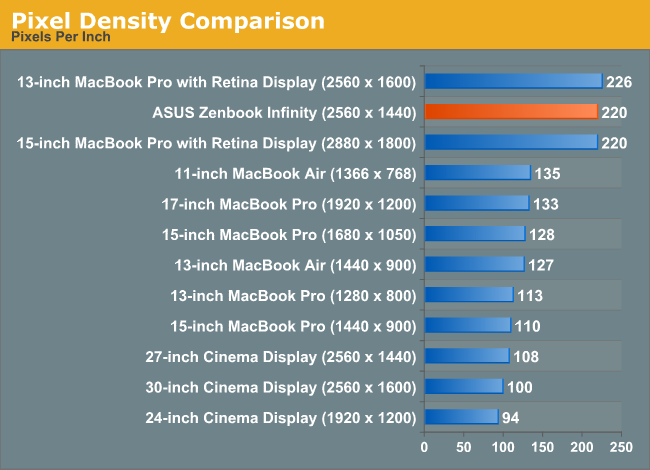

 Quote
Quote



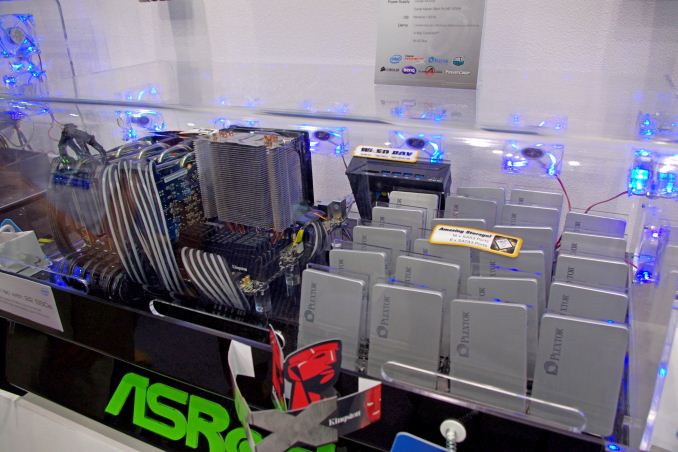
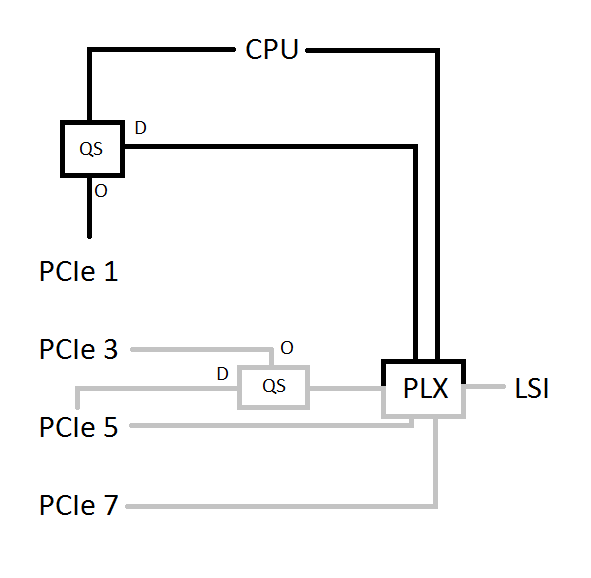
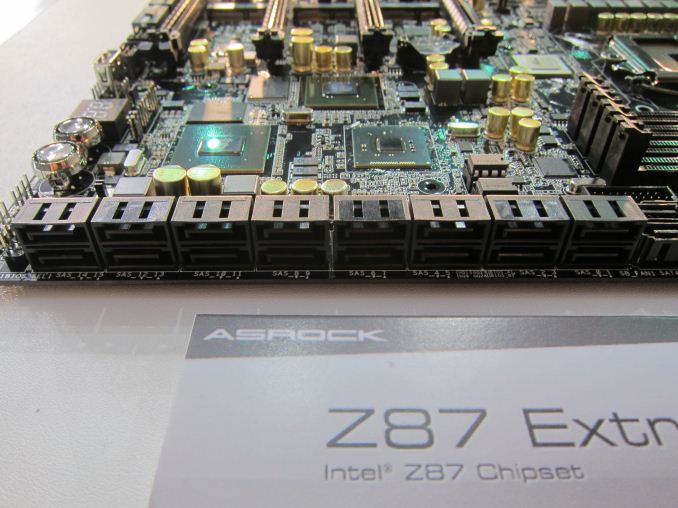
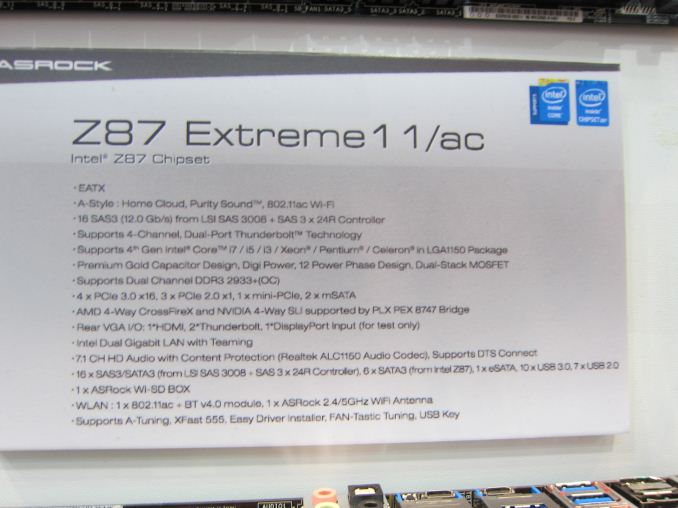















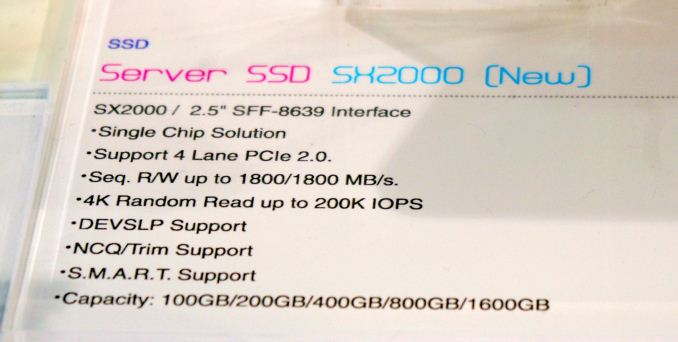




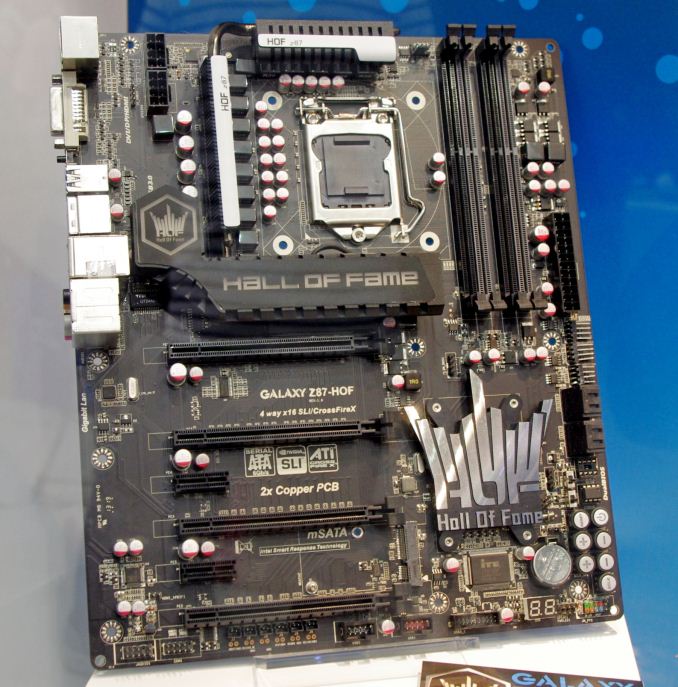






















Bookmarks